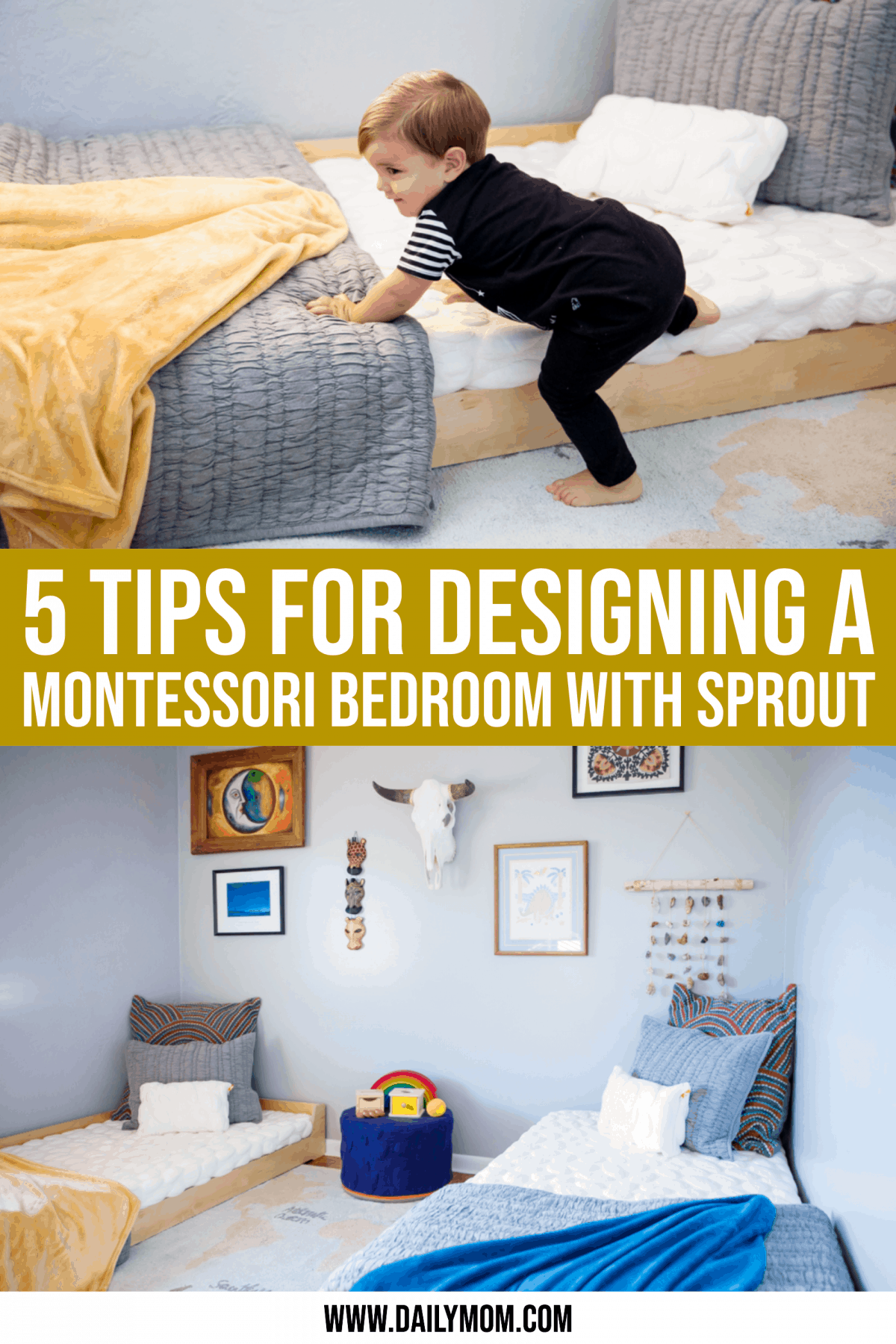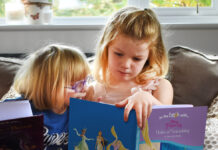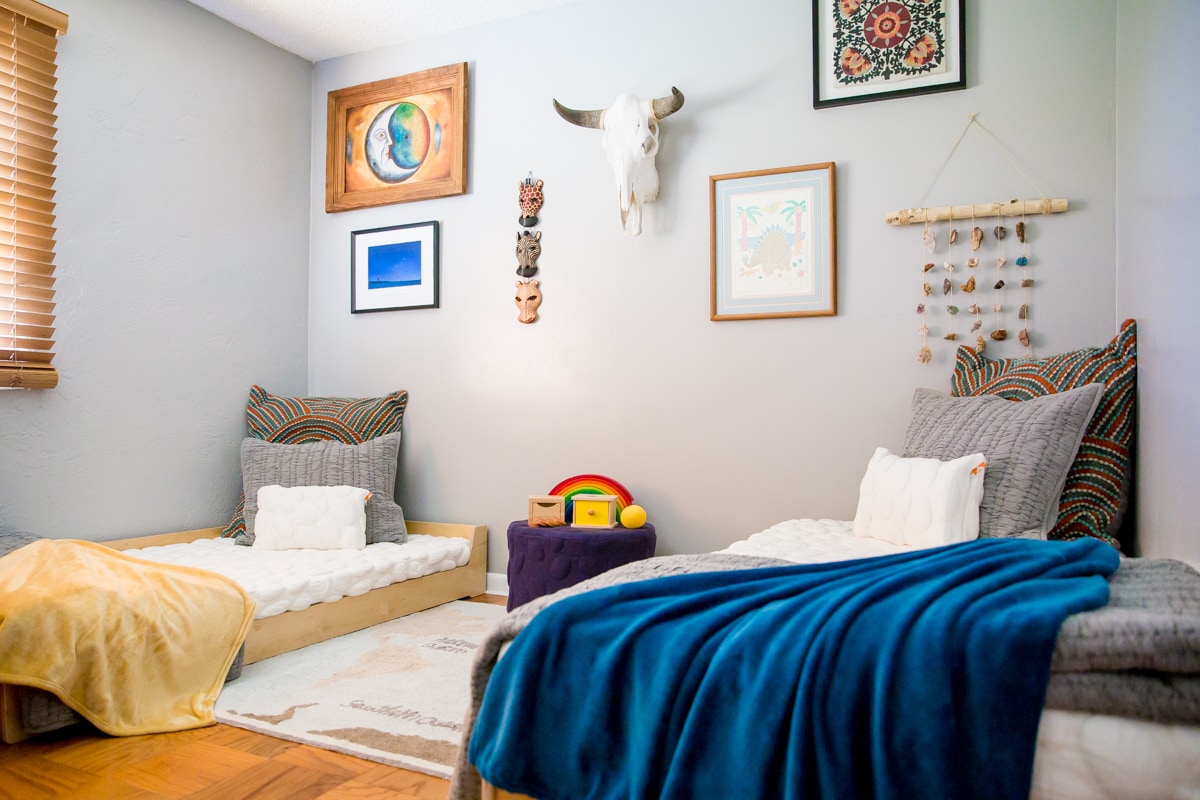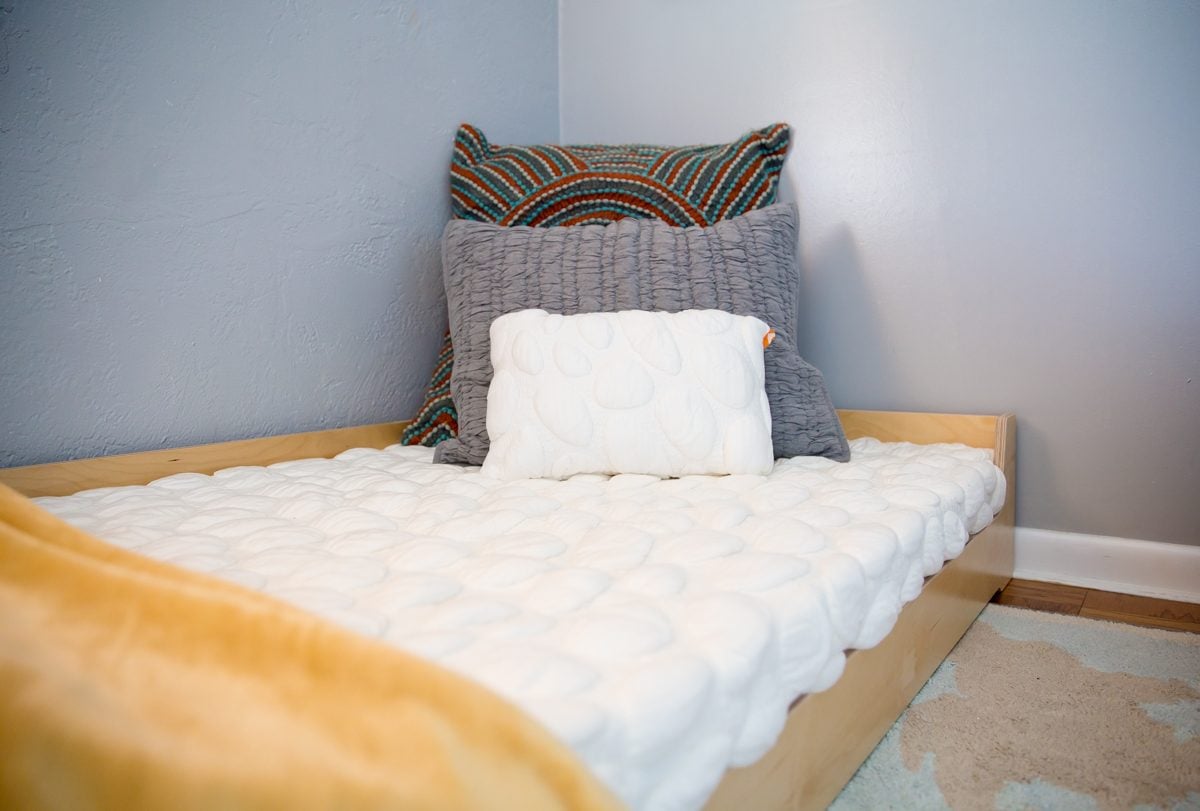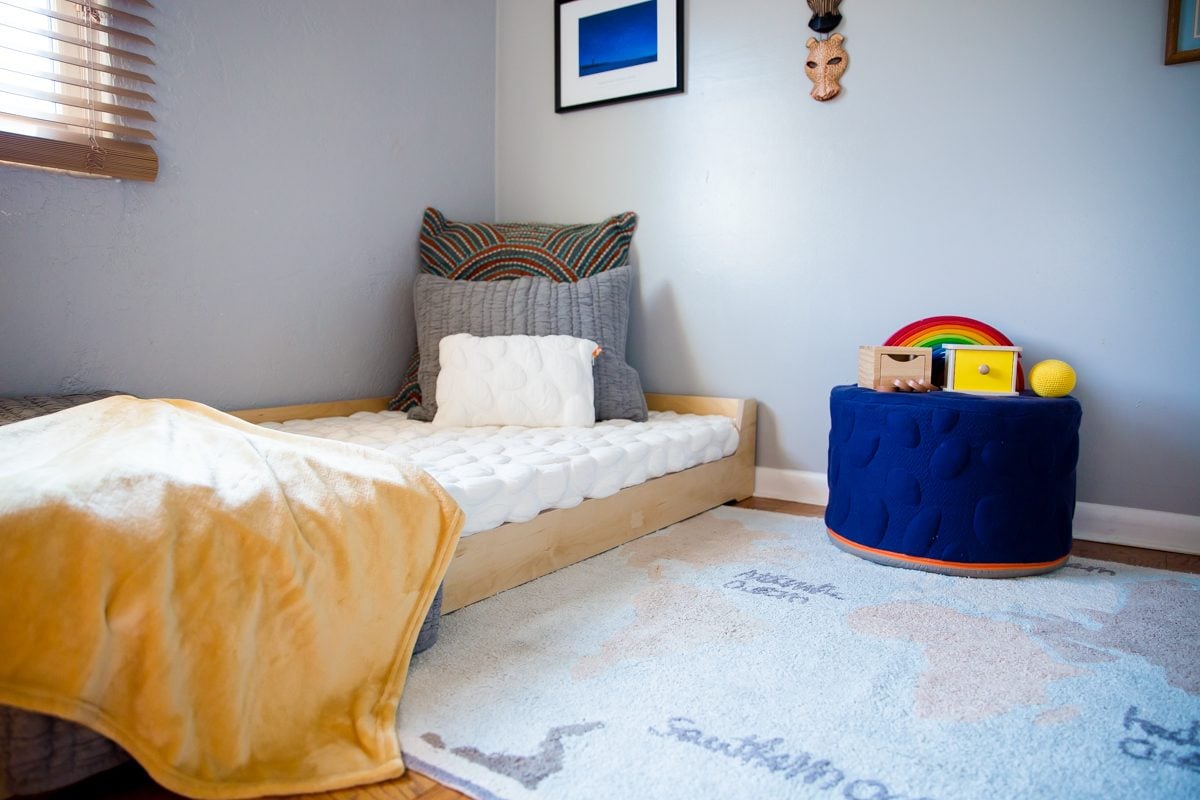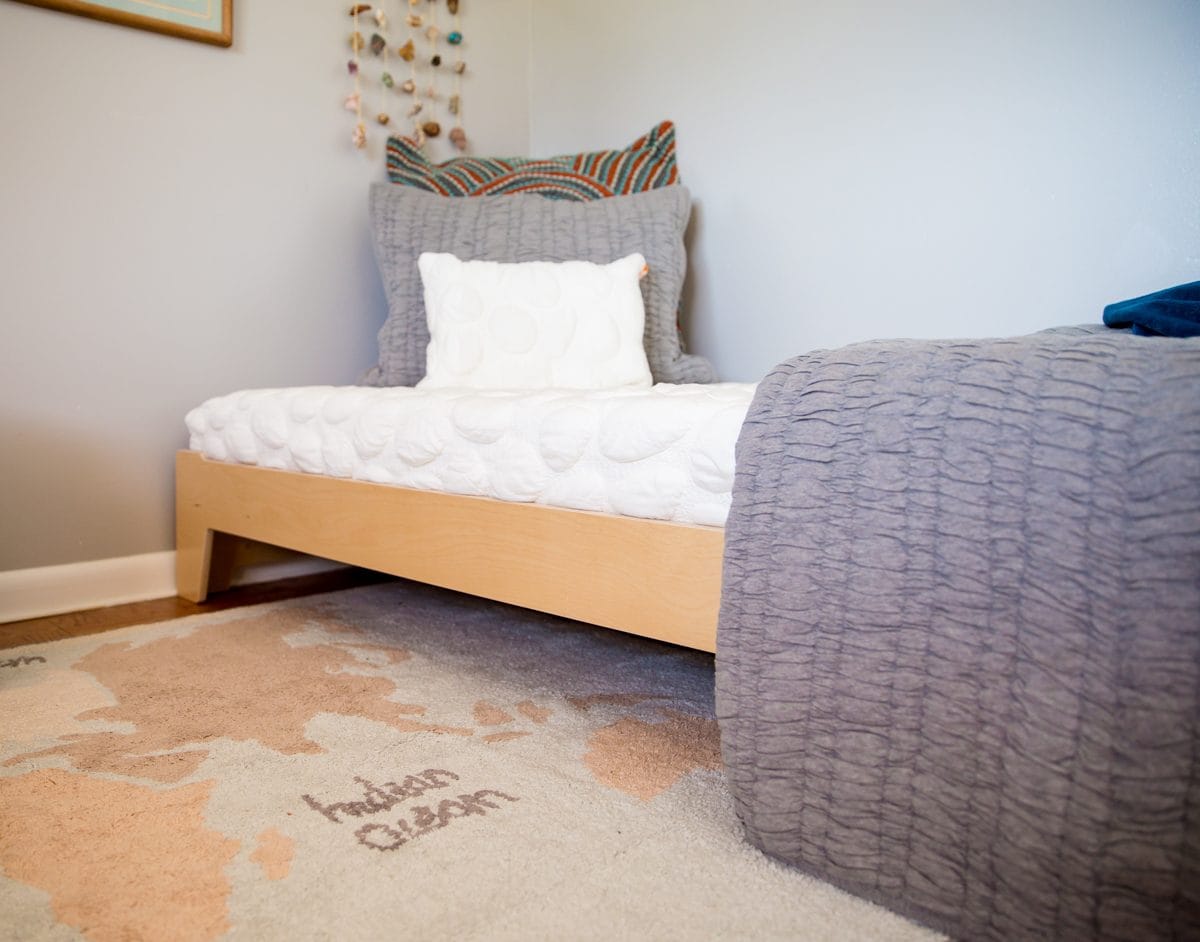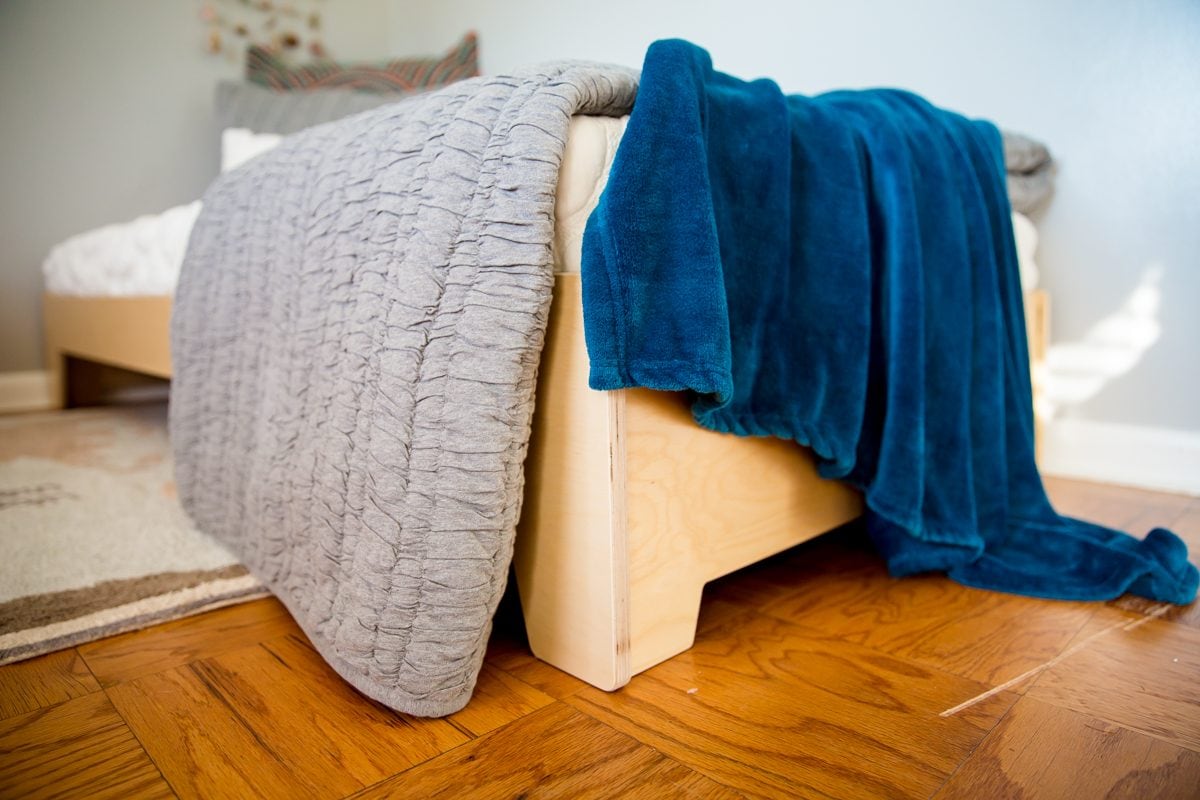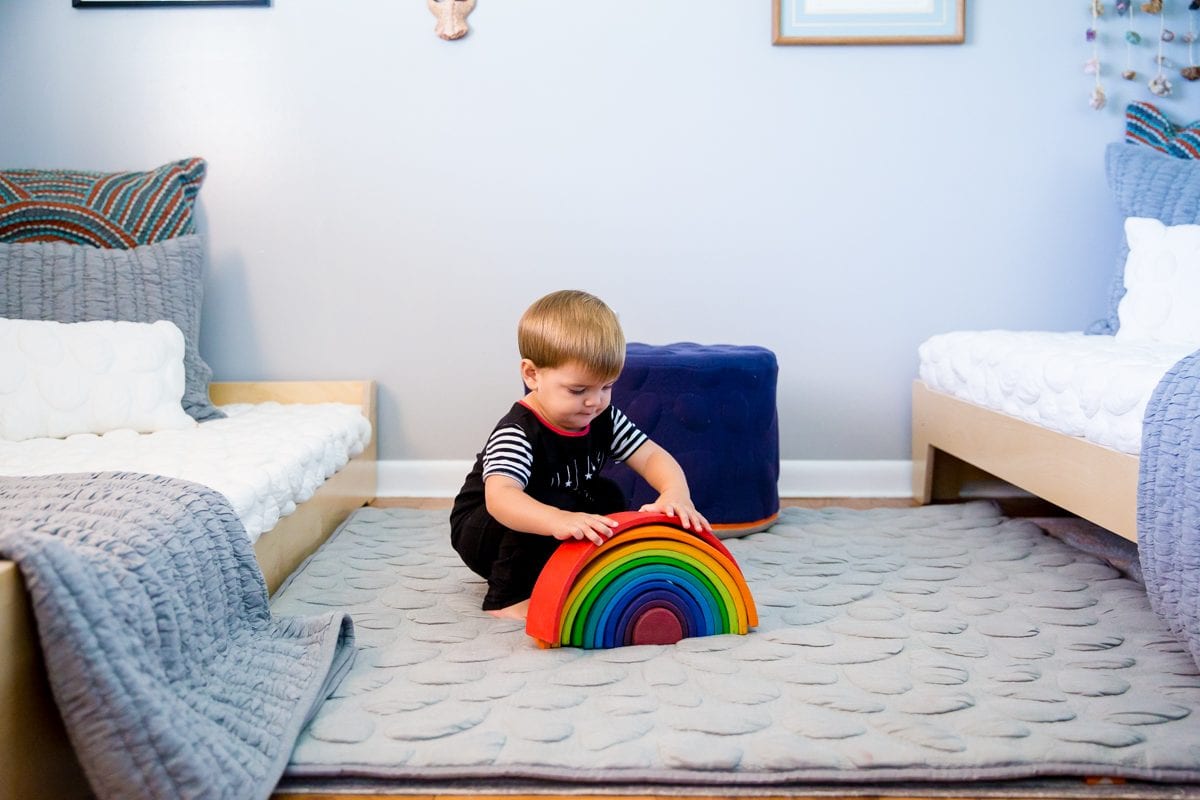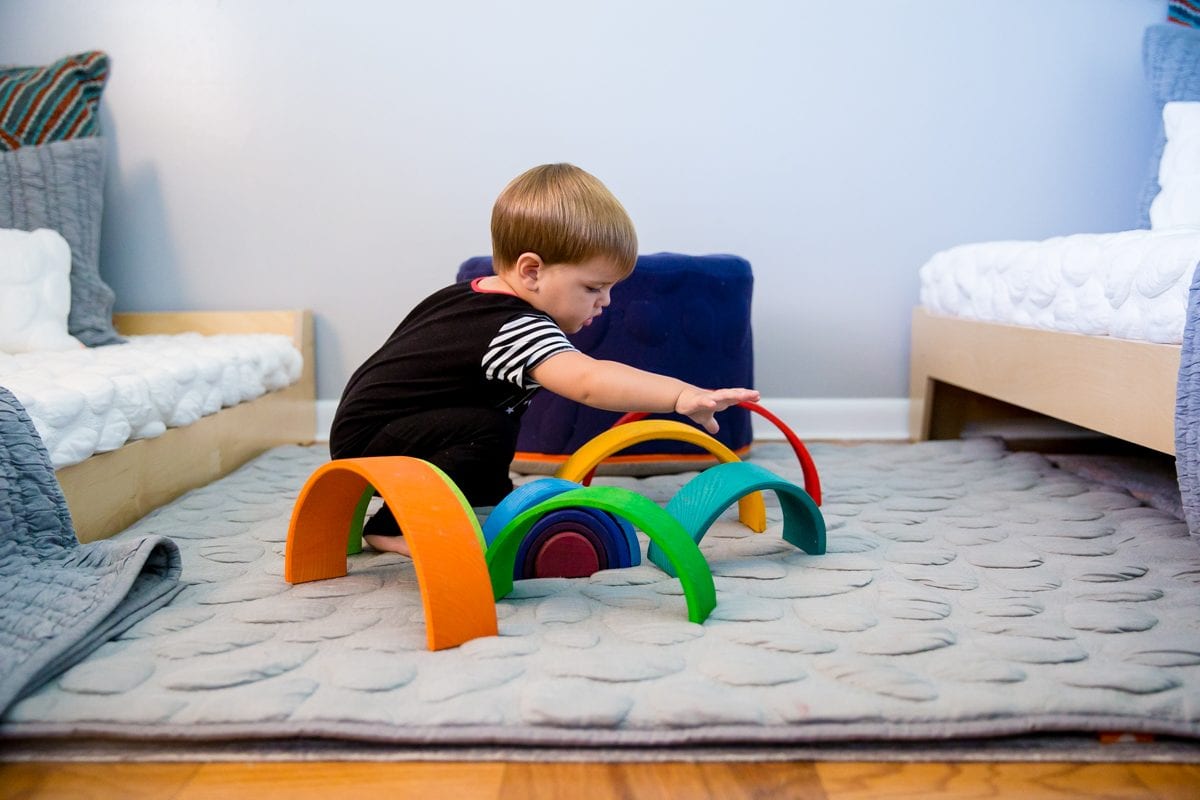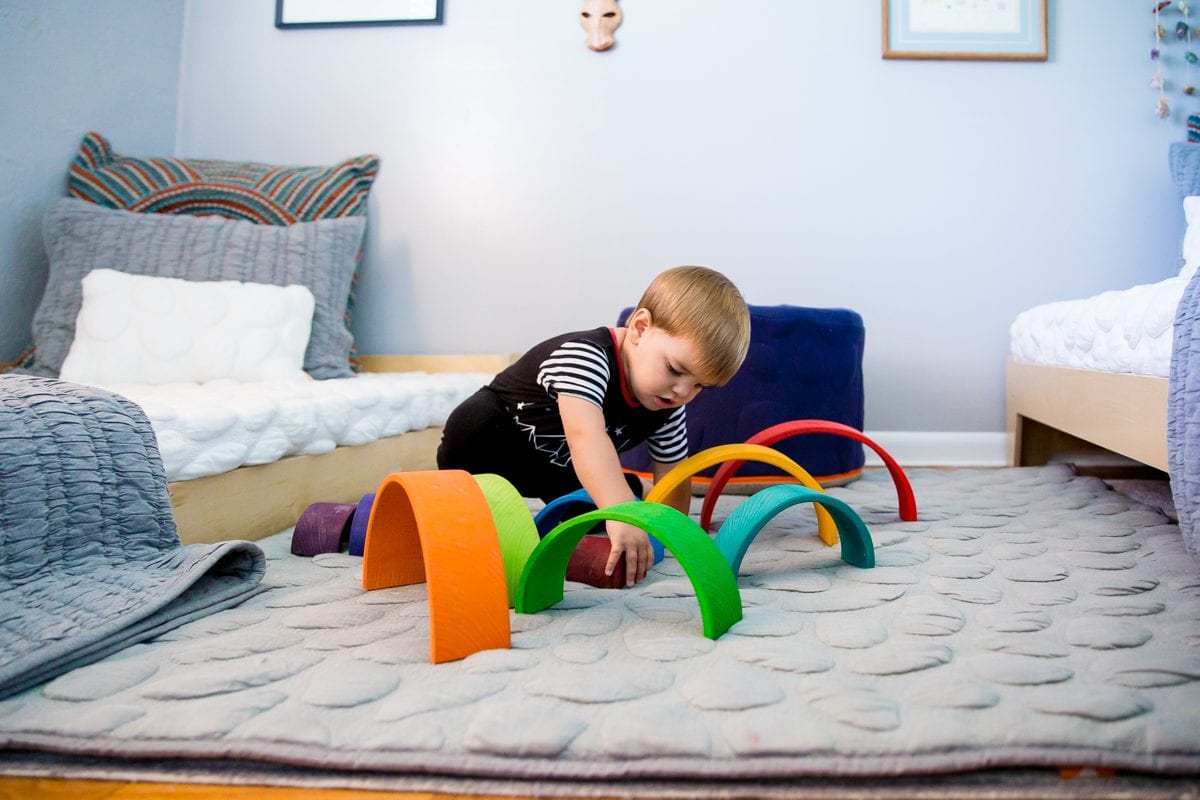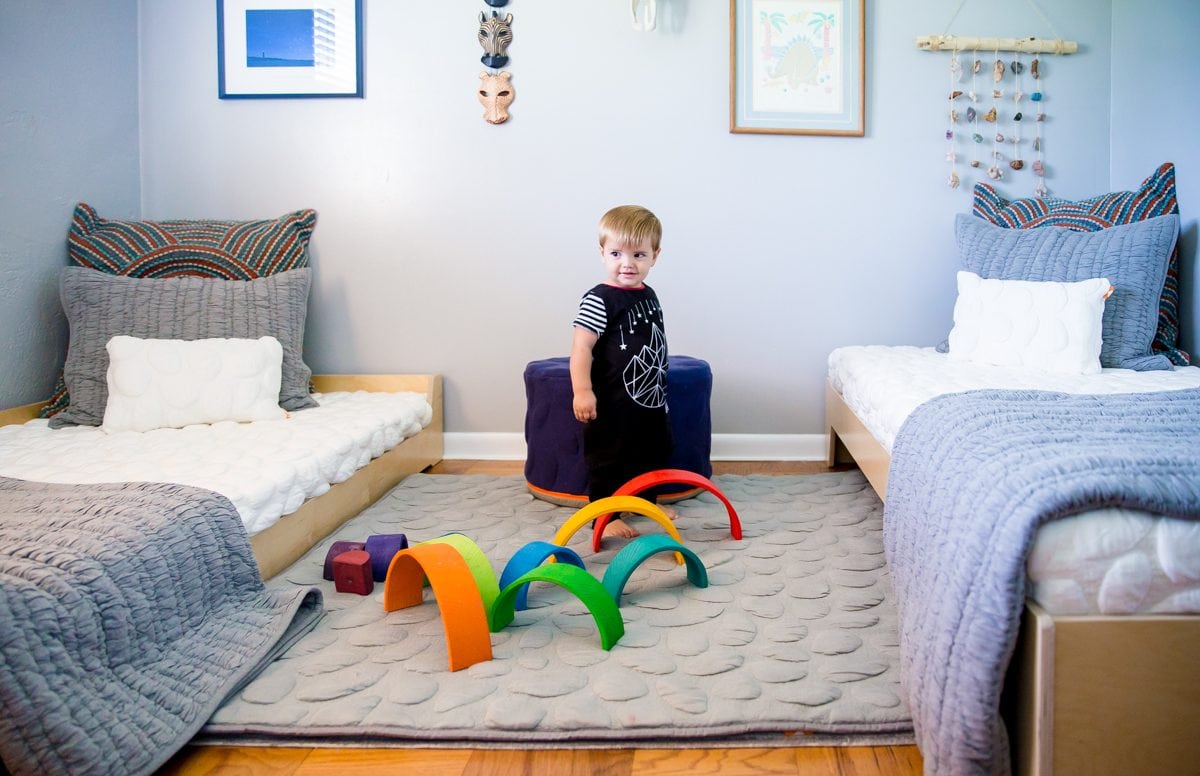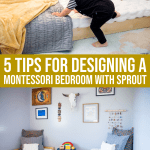Designing a Montessori inspired bedroom with a Montessori floor bed is something all parents should consider. Whether you are new to the parenting game or have been on the scene for some time now, chances are you have heard of the Montessori Method. Most commonly known as an educational curriculum, the idea of creating a Montessori or child-centered space has branched out far from the classroom. Parents around the world have embraced this approach to raising their children from day one. No longer is it only about schooling in a classroom setting, but rather the entire education of the child at home, at school, and in their community.
As we know, and research has consistently shown, the education of our children begins at home from birth. Babies learn at a rapid-fire pace with the most development their little minds and bodies will ever experience occurring during the first year of life. While parents need not map out a plan for their baby’s formal education from the beginning, deciding on an approach to take in the home when it comes to teaching is important.
This can include ideas or principles that are malleable, and those that one parent or the other feels are a must. Examples include sleep practices such as whether the family will co-sleep or baby will sleep in a crib, breast versus bottle feeding, set naptimes versus snoozing on-the-go, and many more.
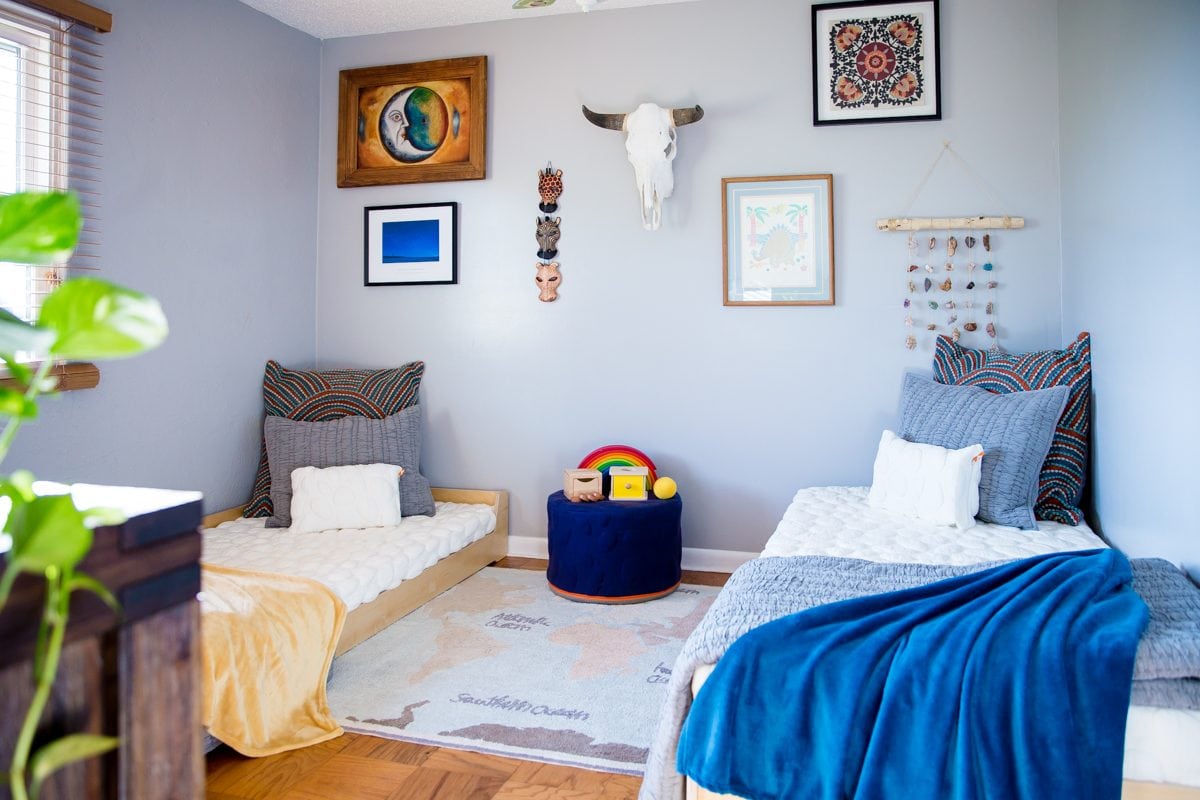
If incorporating a Montessori environment into your home is one of the parenting practices you have decided upon, or even just one you are wondering about, here are 5 tips on starting with your child’s sleep space and designing a Montessori Bedroom.
Montessori Bedroom Ideas
Montessori Floor Bed
One of the key principles of Montessori education is respect for the child which is also the main consideration in designing a Montessori inspired bedroom. Beginning with the child’s sleep space is integral to this concept because the traditional Montessori floor bed allows freedom of movement, promotes independence, empowers the child, and permits free access to other components of the room itself.
Unlike the confines of a crib where parental assistance is necessary for sleeping, waking, and even play, a child sleeping on a Montessori floor bed is going to have the ability to make their own choices.
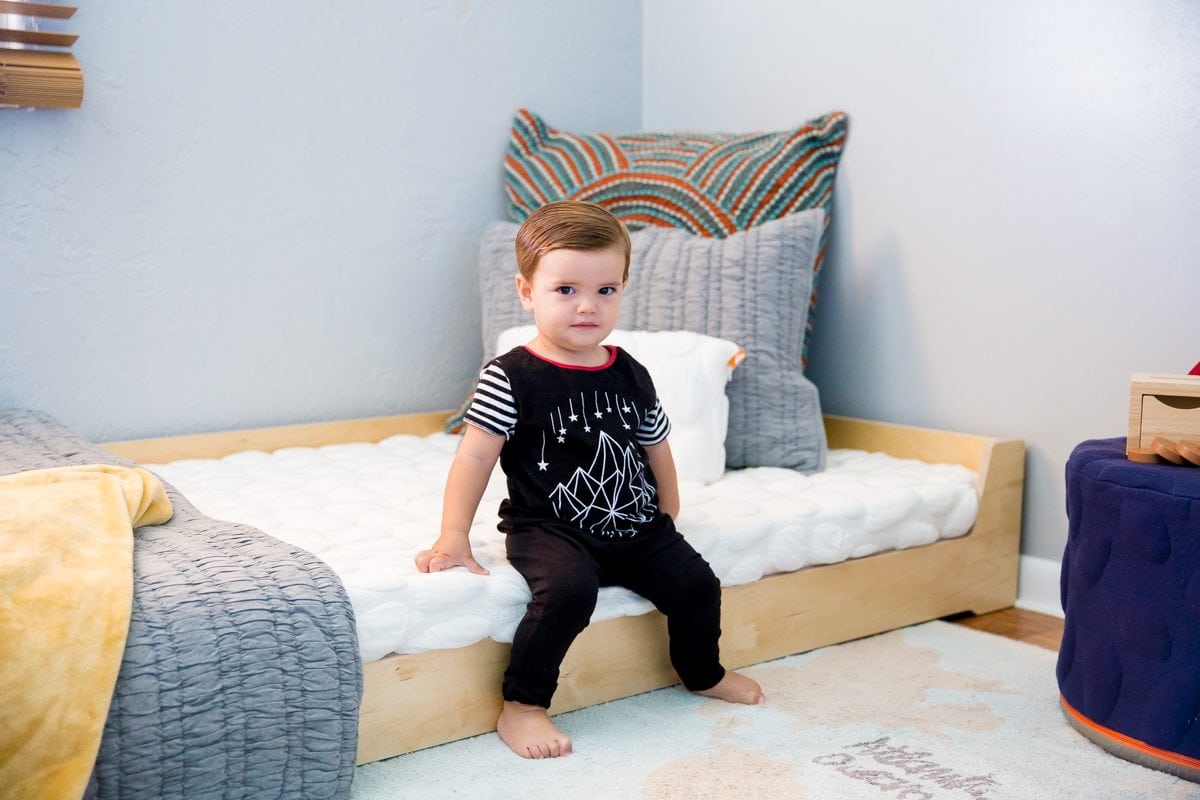
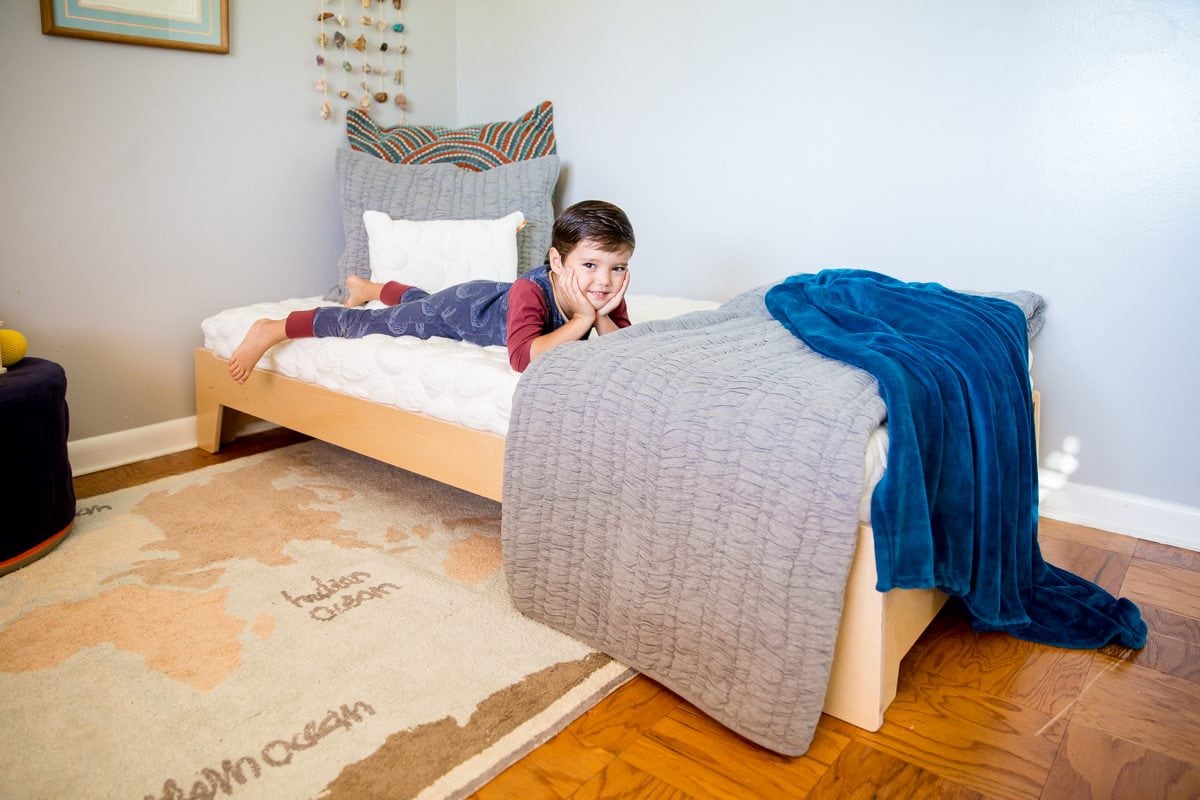
Benefits of the Montessori Floor Bed Include:
- Establishing independence and autonomy
- Developing spatial awareness
- Teaching physical boundaries
- Encouraging self-discipline
- Fostering healthy sleep patterns
While setting up a Montessori floor bed could be as simple as a mattress on the floor, this is not necessarily the best or even healthiest option for your child. Mattresses placed directly on the floor can build up condensation underneath leading to mold growth and other grimy build-ups. For a healthy, sustainable, and safe option, we love the Montessori Floor Bed from Sprout.
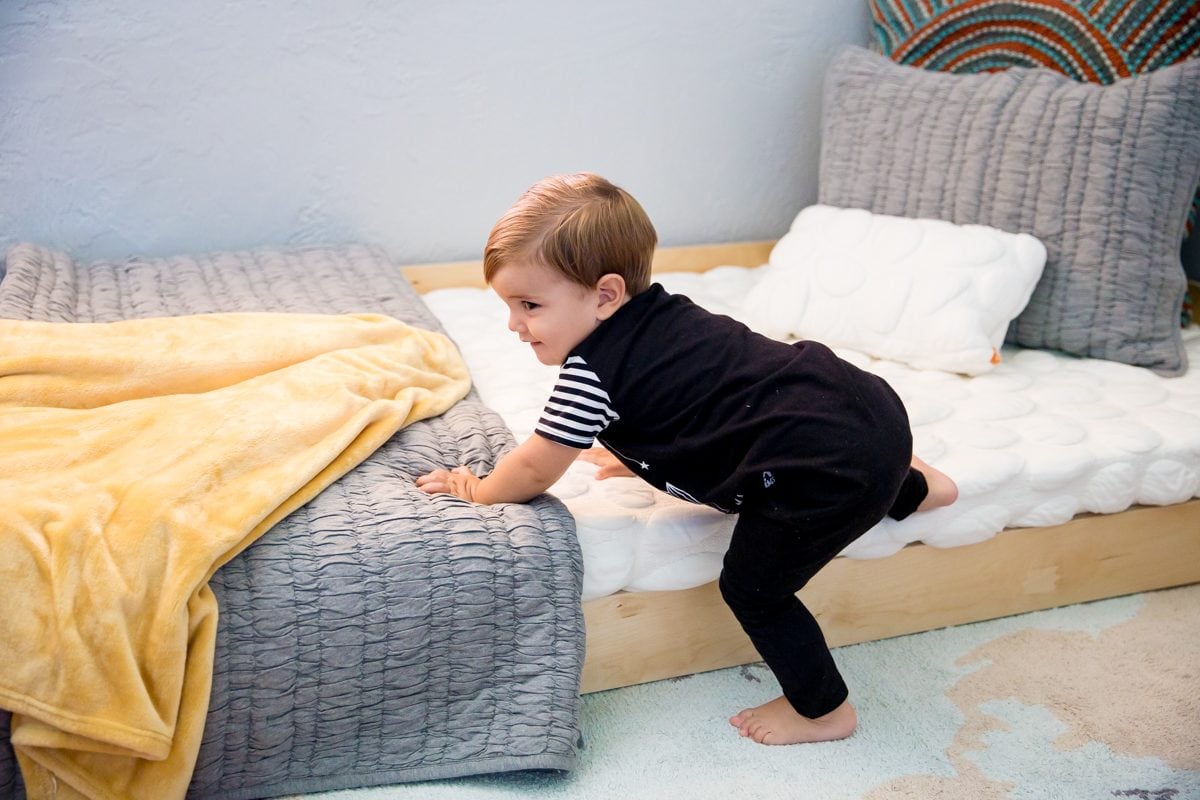
This beautifully designed Montessori Floor Bed is not only available with a variety of configurations to meet your exact needs, but the adjustable frame grows with your child, making it a staple in your child’s room. Additionally, if you are creating a shared bedroom for kids of different ages, you can again configure the beds according to their individual needs.
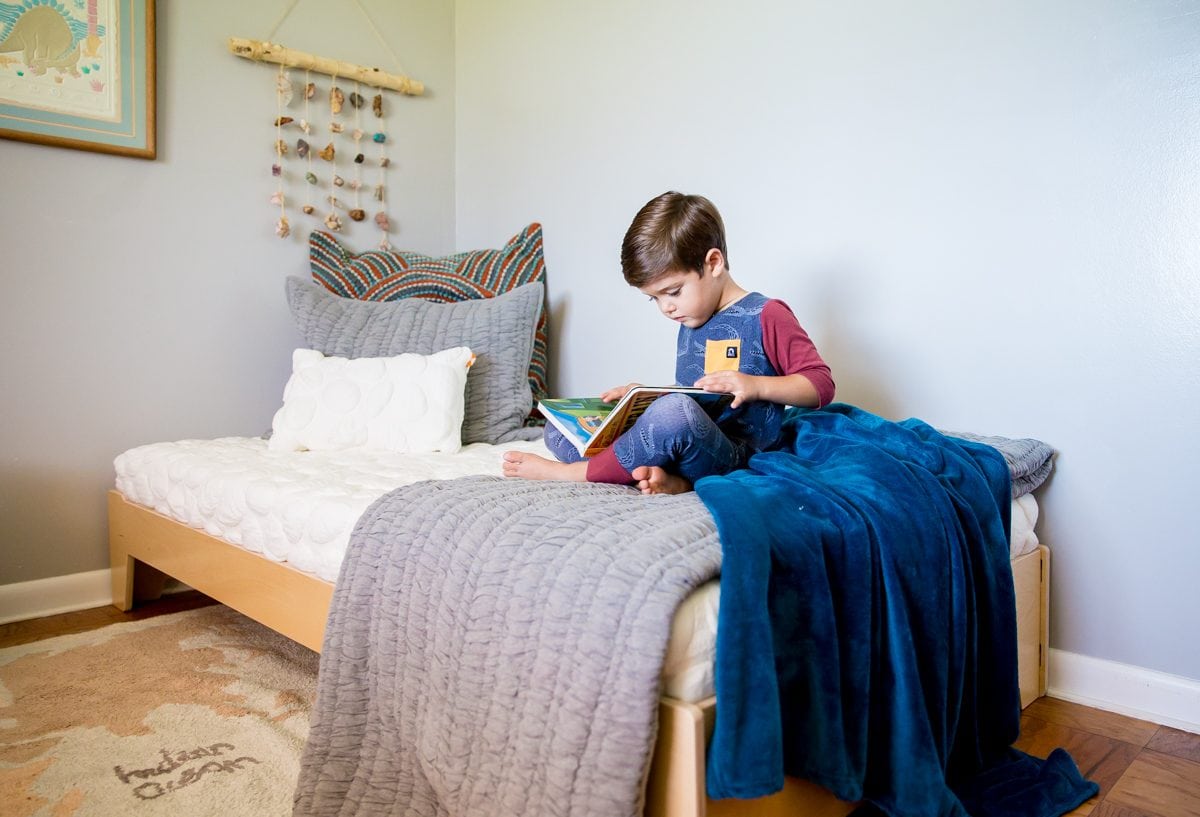
Crafted of beautiful and durable Baltic Birch, Sprout’s Montessori Floor Beds keep your child’s mattress off the ground preventing mildew underneath. Simple to assemble without any tools, these tension-lock beds are easy to put together and disassemble, storing flat for moving or storing for future use.
Additionally, the Sprout Montessori Floor Bed is convertible allowing you to use it low to the ground for infants and toddlers, and simply flip it over for older children and teens. With a 250-pound weight limit, mom and dad can even comfortably snuggle up with their little ones, easily transitioning those co-sleeping babies into their own bed.
SHOP:
Montessori Floor Bed
EXPLORE AND CONNECT:
Sprout | Facebook | Instagram | Twitter | Youtube | Pinterest
Neutral or Natural Decor
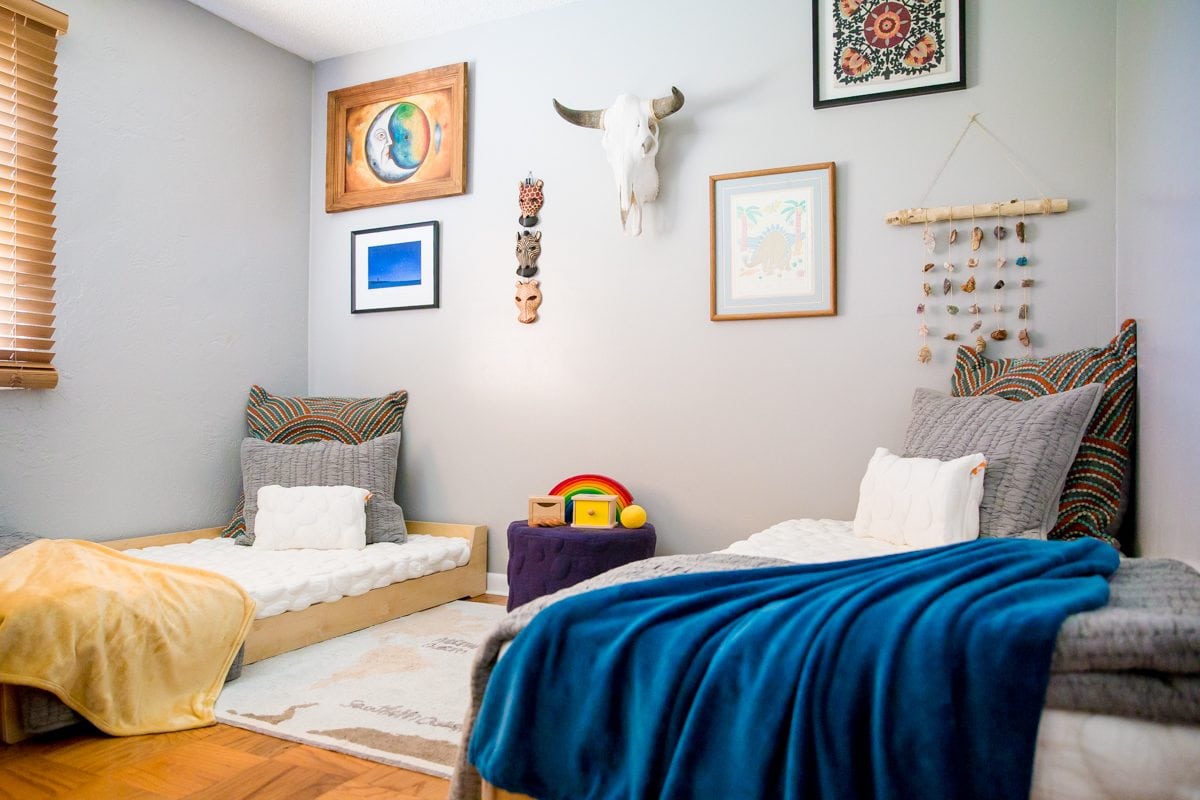
Montessori education incorporates core values of respect, peaceful living, and sustainability. Children in a Montessori environment are taught respect not only for themselves and for others, but for all living things. Thus, keeping in line with that concept, muted, natural or neutral tones are important in designing a Montessori bedroom.
Read More: My Pledge to Peace and Positivity in the New Year
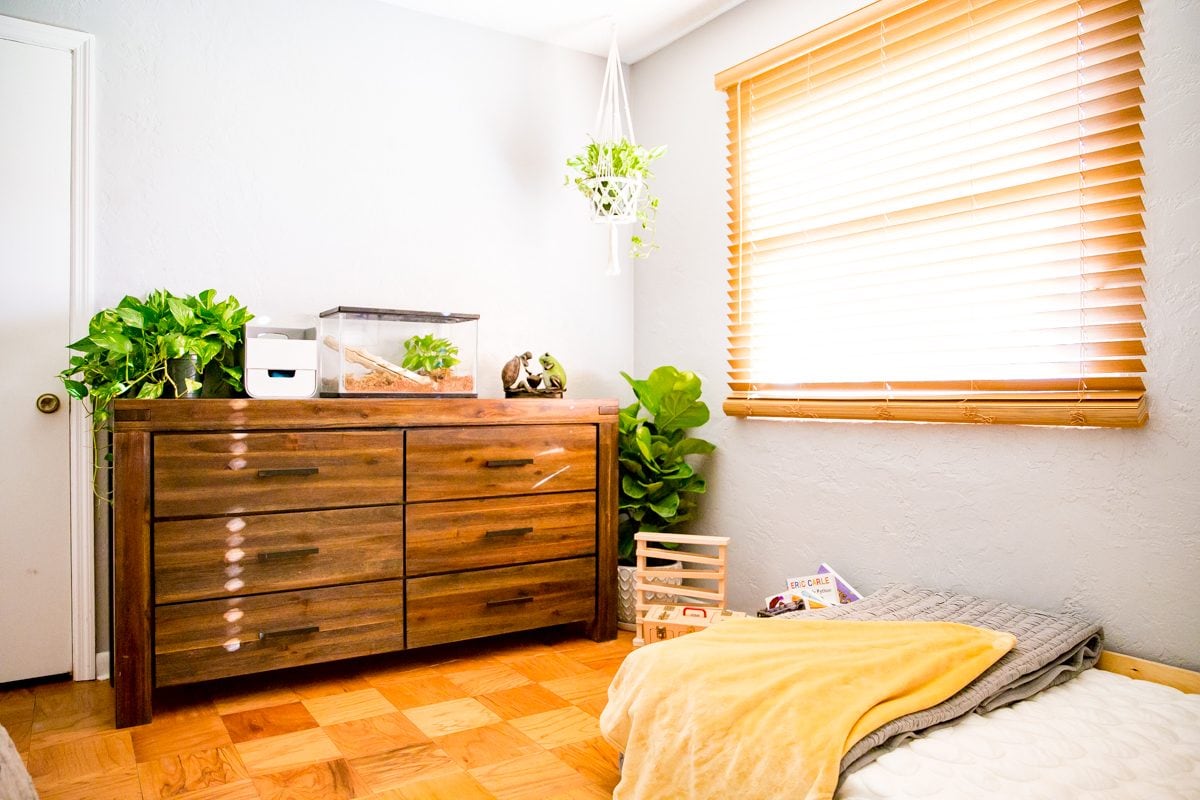
Colors and shades that induce calm, serenity and tranquility are all acceptable and encouraged. Young children process or absorb everything through their senses, thus in a bedroom where children should be relaxed and peaceful the color scheme will help in keeping with this concept.
Soft cozy blankets, mattresses, or rugs can help to impart this sense of peace and quiet, but remember to keep it simple. Natural items, easy to care for plants, simple hanging mobiles and more, can both engage and soothe your child making their bedroom a haven in our otherwise overstimulating world.
Keep it Simple
Also known as a child-centric environment, everything in a well-prepared Montessori environment, whether that be a bedroom, playroom, or classroom, should reflect beauty, simplicity, and order. That said, think minimally when planning out your child’s Montessori bedroom, especially since many children’s bedrooms are smaller in size already. Keep the decor at a minimum, stay away from oversized chairs, cushions or toyboxes, and only provide enough toys or activities to engage and stimulate your child, not overwhelm them.

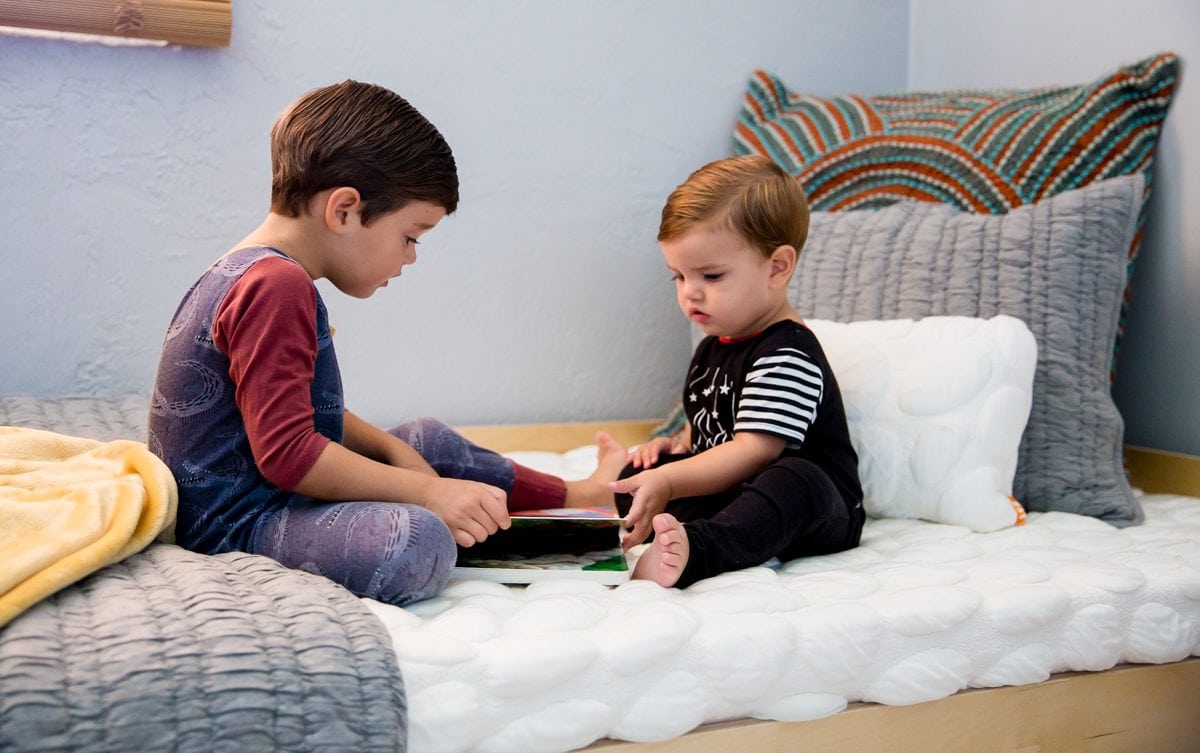
Simple bins or baskets are a great way to store books or small toys, but this doesn’t mean you should provide an entire wall unit with overflowing bins of toys. Children get easily overstimulated in messy playrooms or bedrooms which not only leads to meltdowns but impedes rather than enhances their learning and enjoyment.
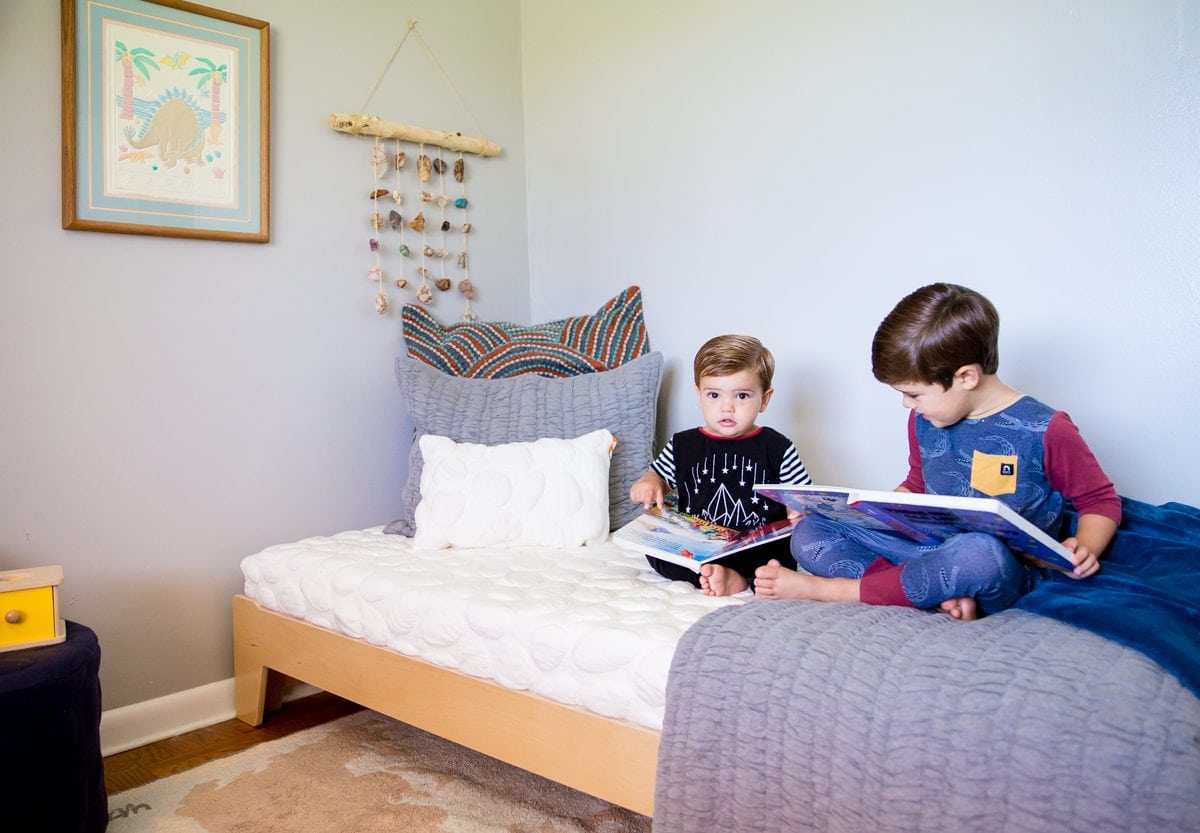
Simplicity is designing your child’s bedroom intentionally, rather than using their space as storage for all of their worldly possessions. Rotate out toys and books on a regular basis, keeping the rest in storage bins. This will not only keep it simple, but your child will actually play with and enjoy the toys or activities provided instead of dumping every bin, basket, and box on the floor with no sense of purpose.
Allow for Accessibility
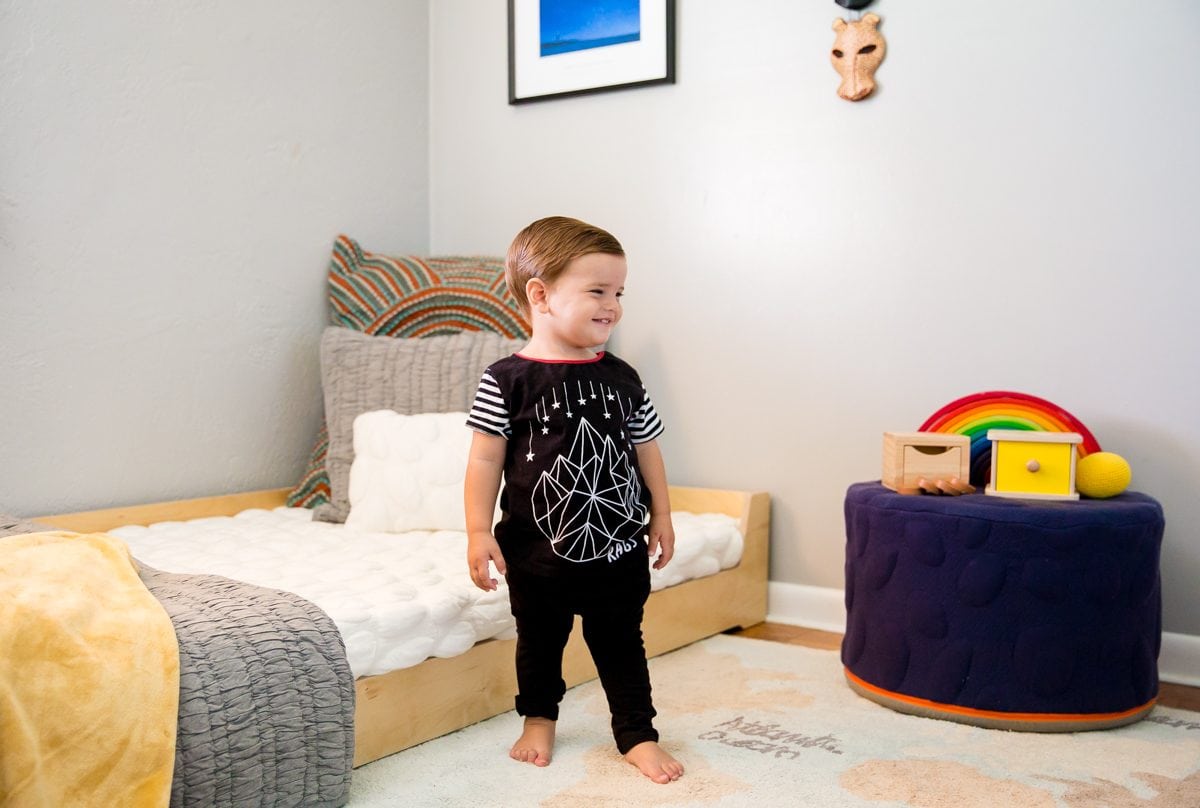
Remember that you are creating a bedroom for your child. Make sure that you are creating a safe, well-designed space that actually allows your little one access to their things.
Pictures should be hung low enough for the child to see and enjoy, books and toys should be readily accessible, not placed out of reach at an adult-only level, and furnishings, such as their Montessori floor bed should be at the correct height for the child’s age and size so that they can climb in and out alone, safely.
Read More: Starting Montessori Education Young With Monti Kids Subscription Box
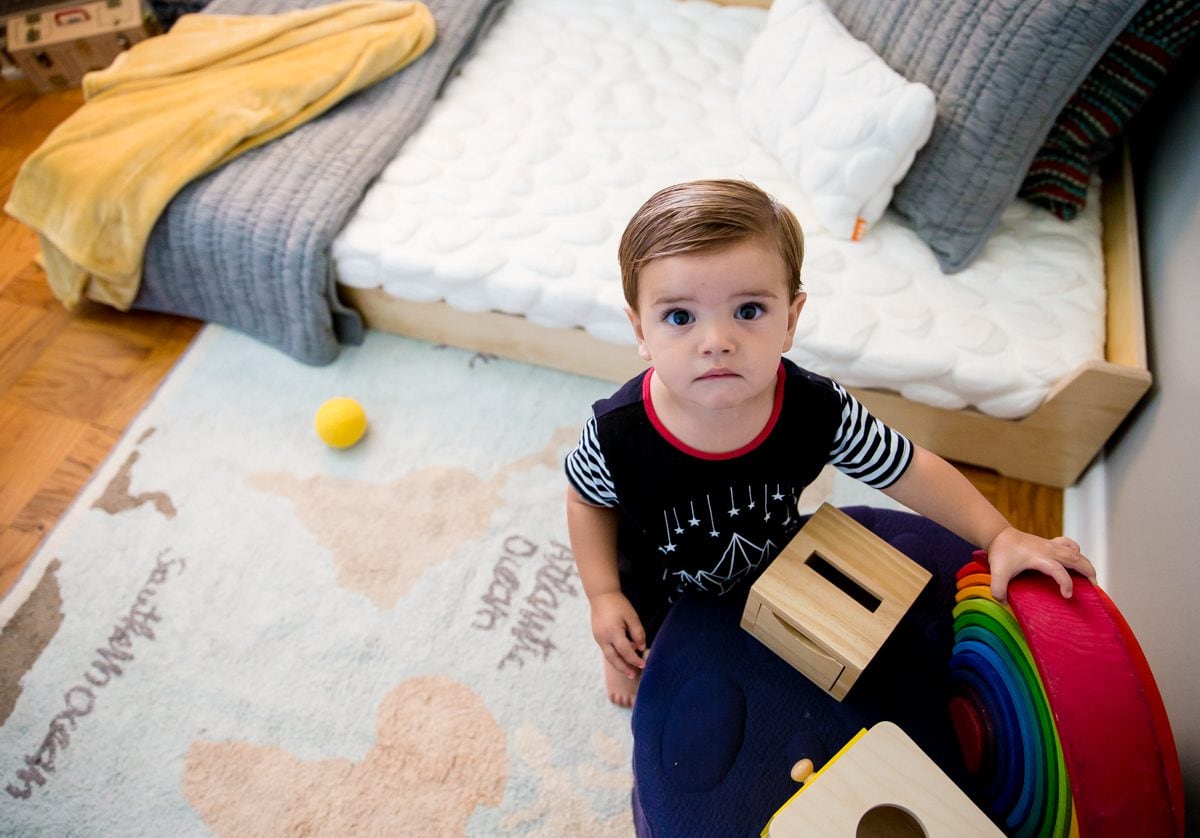
Plan placement of furnishings such as seating, ottomans, or shelving such that the child can utilize these items themselves as much as possible, with little to no adult intervention. Consider attaching shelves or bookcases, even if low height, to the wall for safety, especially if you have a budding climber.
Accessible Design Ideas Include:
- Place a low string or board with clothespins or clips for hanging the child’s artwork.
- Place low hanging fiber/yarn art that stimulates the child’s senses.
- Decorate with floor plants that are child safe and allow the child to water the plants and dust the leaves.
- Hang mobiles or other movable items above the child’s bed at an angle they can enjoy.
- Place activities or lessons on a shelf, low ottoman or table at the child’s level and sufficiently spaced so they can see what is available to them.
- Rather than using a traditional bookcase either use a child’s forward-facing bookshelf or place books in baskets around the room for easy access.
Provide for Free Play
Montessori education encourages independence, freedom of choice and active play. As such, providing space and activities for free play is an integral part of designing a Montessori bedroom. A Montessori approach allows a child to discover the world through hands-on experiences that promote enthusiasm and curiosity for learning.
Children need to feel at home in their own room. This needs to be their space where they can sleep, play, and interact with their world in the way they so choose.

Montessori believes that play is a child’s work and that children learn through play and through their interactions with their peers. While some believe Montessori is actually opposed to play in the sense that Montessori curriculums do not include pretend or imaginative play which is true, it simply depends on one’s interpretation or definition of what play is. If one considers play as what one wants to do as opposed to what one is obligated to do, then a Montessori environment meets these standards.
Read More: Raising Children with Respect
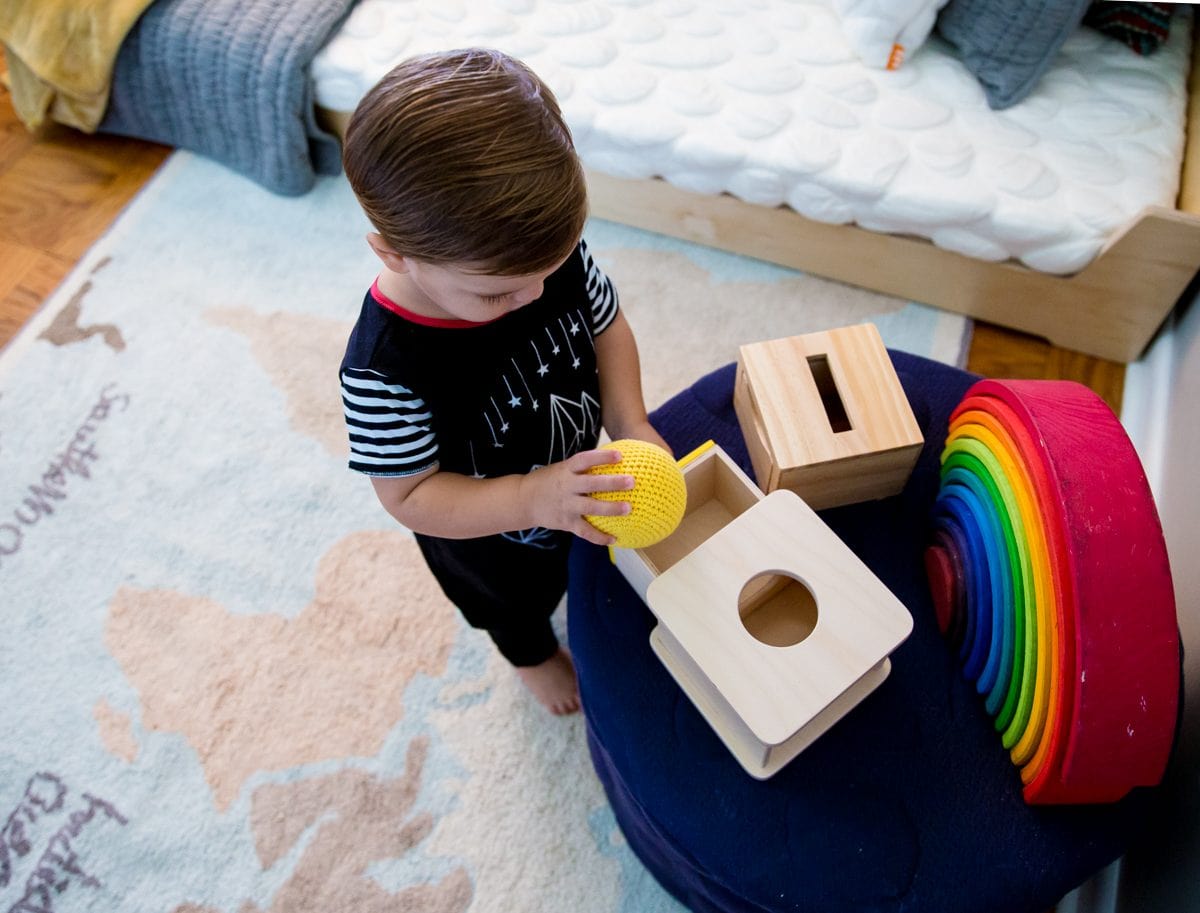
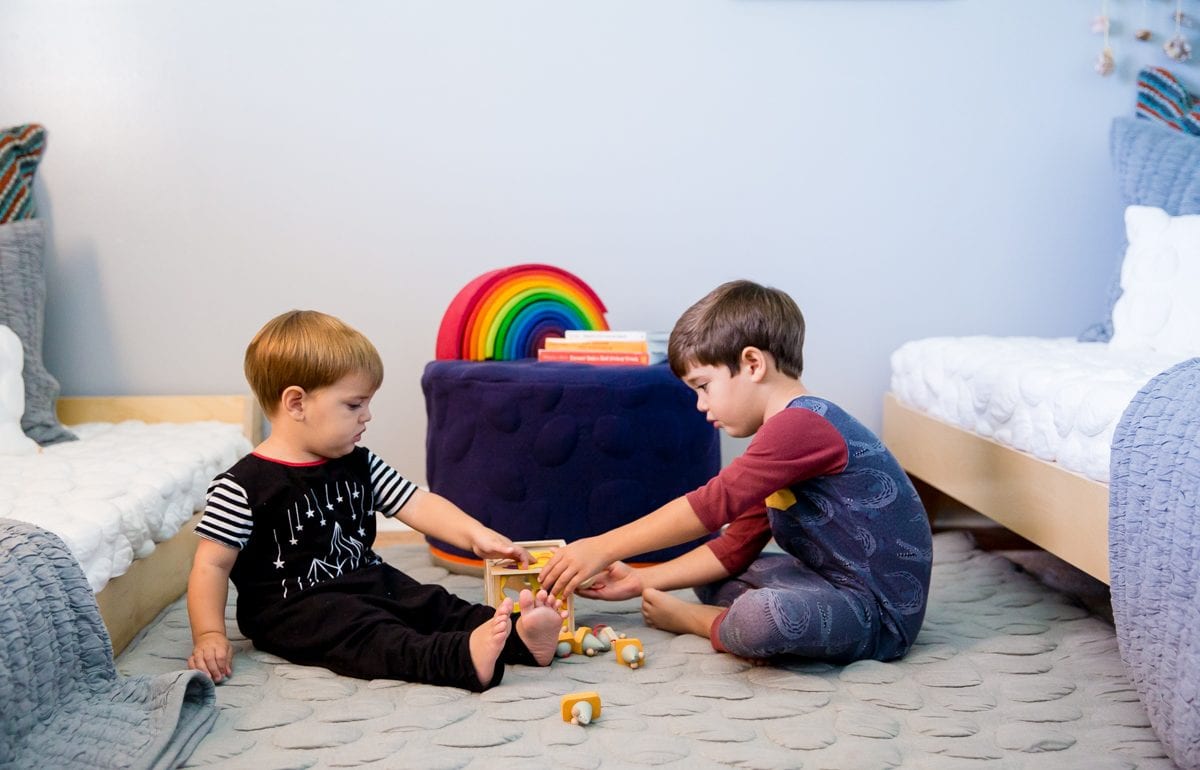
Read More: The Importance of Physical Play
When designing a Montessori inspired bedroom, parents should seek quality over quantity when it comes to toys and activities. Children in a Montessori classroom may spend hours on the same lesson because they are actually delving into the work and learning different concepts each time they complete what to an adult may seem to be the same task. Thus, providing a few high-quality Montessori toys in your child’s room will be sufficient for hours of open-ended play.
[td_smart_list_end]
A child’s bedroom is frequently the only place in the home that they get to really call their own, even if shared with a sibling. It is the place where they will store their treasures, spend late nights whispering with their brother or sister, and rest their little heads when the weight of the world seems so BIG.
A bedroom is a haven. It is meant to be a comfy, cozy, warm and welcoming space where one can simply relax and let their cares dissipate; this applies to both children and adults. By creating a Montessori bedroom with Montessori floor beds, furnishings, and toys that both fit your child perfectly and induce a sense of calm and serenity in their very own space you are parenting with both love and respect for your little ones.
WANT TO READ MORE?
Check out this article on Encouraging Education: Developing a Growth Mindset in Your Child.
